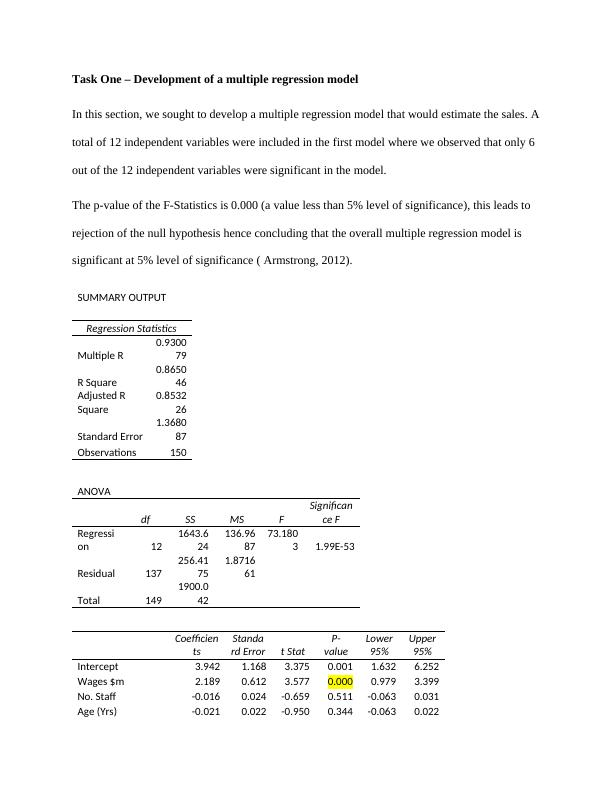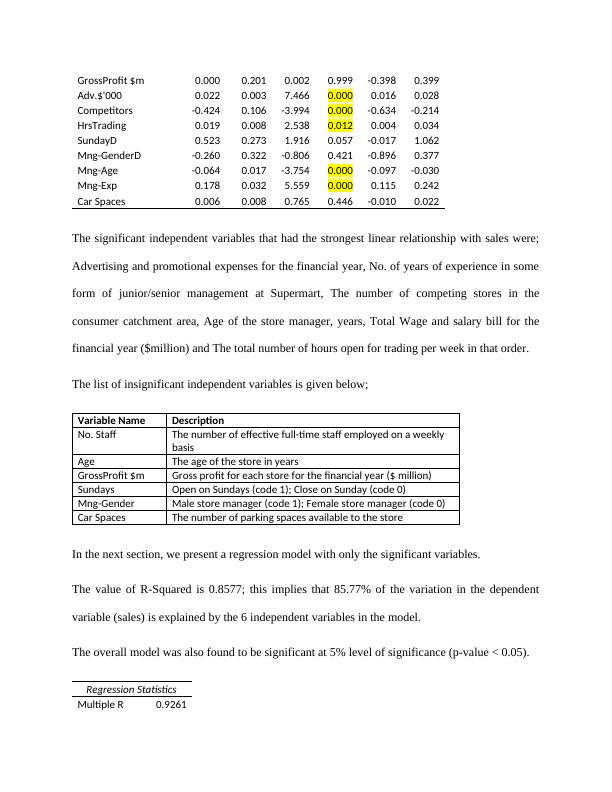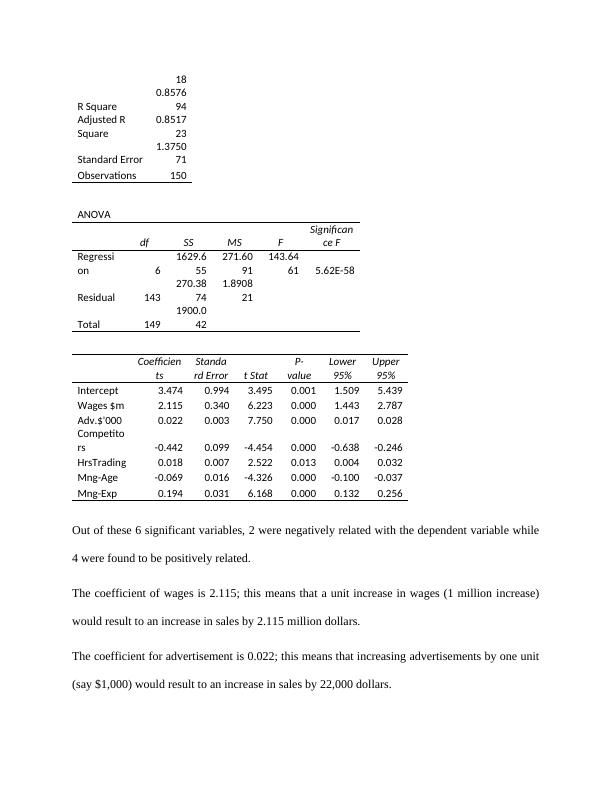Development of a Multiple Regression Model for Sales Estimation
This assignment assesses the ability to use the appropriate technique to analyse the data, correctly interpret the analysis output and draw appropriate conclusions.
12 Pages1908 Words297 Views
Added on 2023-06-11
About This Document
This article explains how to develop a multiple regression model for sales estimation using 12 independent variables. It also covers how to classify customers according to RFM and develop a sales forecast using time series analysis. The article includes regression statistics, ANOVA, coefficients, and lift ratios. It also provides a time series plot and forecast error percentage. The article is suitable for business analysis courses.
Development of a Multiple Regression Model for Sales Estimation
This assignment assesses the ability to use the appropriate technique to analyse the data, correctly interpret the analysis output and draw appropriate conclusions.
Added on 2023-06-11
ShareRelated Documents
End of preview
Want to access all the pages? Upload your documents or become a member.
STAT 6003: Statistics for Financial Decisions
|9
|1214
|114
Introduction to Regression Analysis
|8
|1239
|483
Mortgage payment Gender Income
|8
|728
|10
Econ 262 Problem Set 2 Question 2022
|6
|1114
|16
Problem Analysis and Statistics Student Name: Instructor Name:
|3
|452
|88
Understanding Regression Terminology and Simple/Multiple Linear Regression
|6
|796
|151




